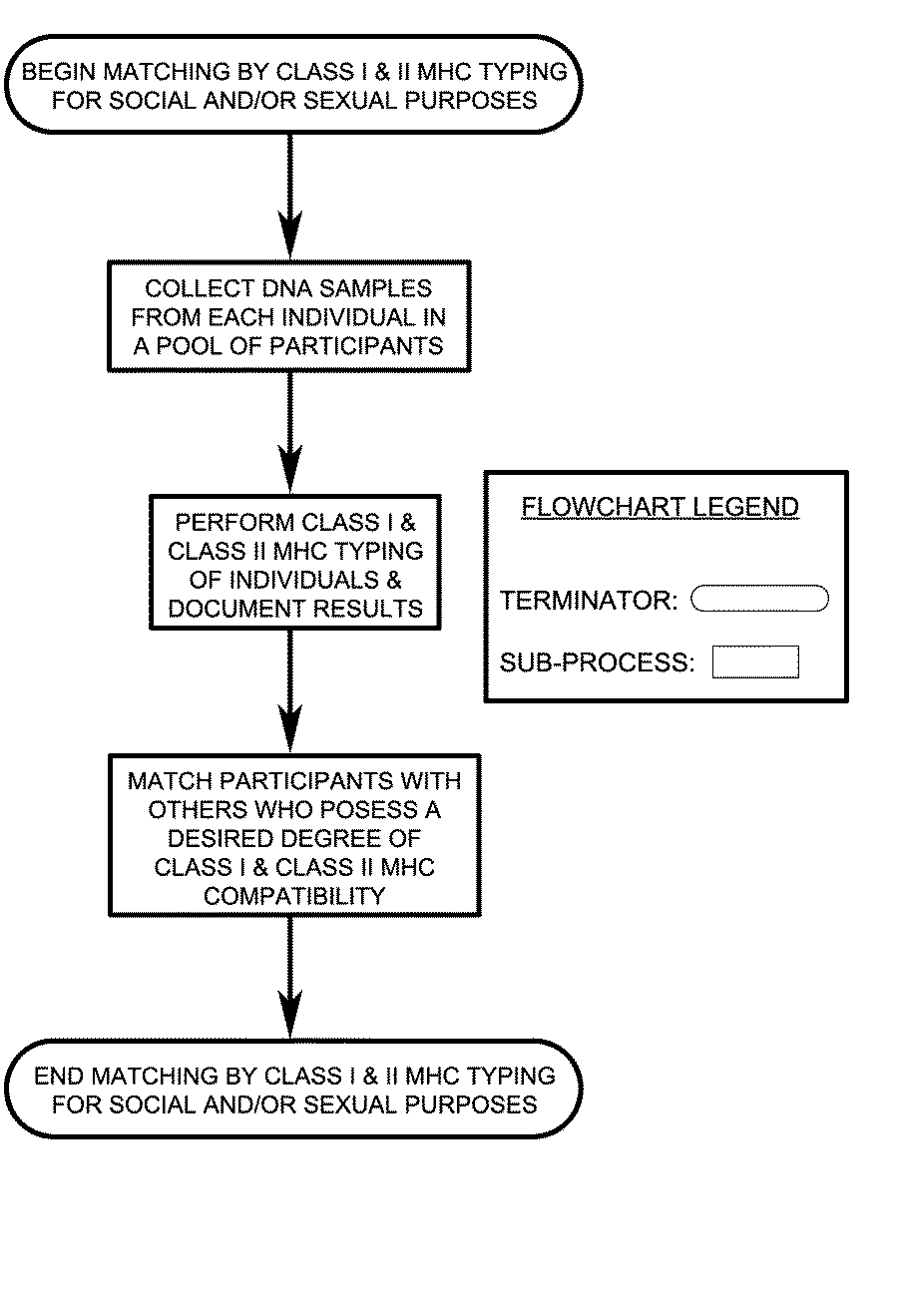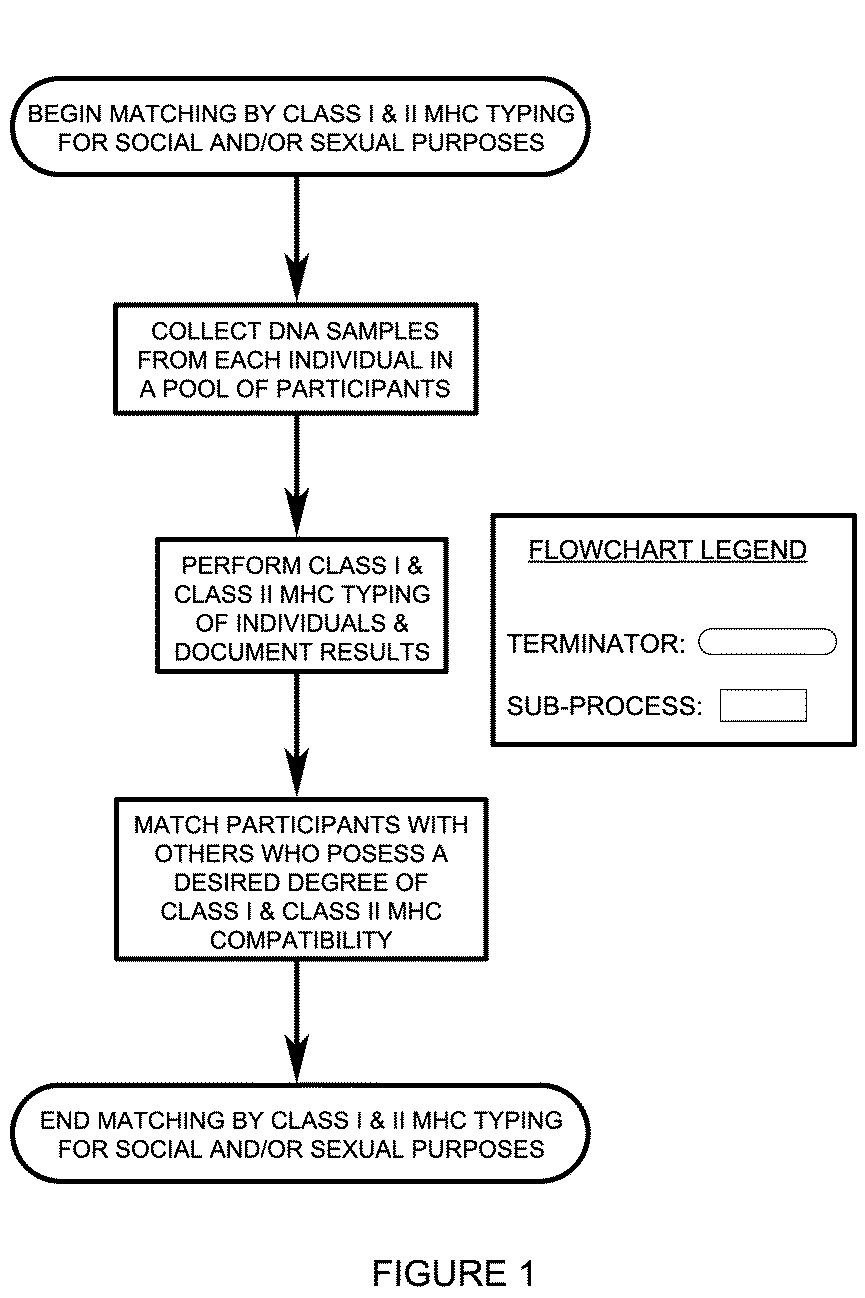Class I and Class II MHC Profiling for Social and Sexual Matching of Human Partners
a technology of social and sexual matching and mhc, applied in the field of class i and class ii mhc profiling for social and sexual matching of human partners, can solve the problems of lack of sexual attraction between two, lack of natural body odor of each other, and no one's assurance,
- Summary
- Abstract
- Description
- Claims
- Application Information
AI Technical Summary
Problems solved by technology
Method used
Image
Examples
Embodiment Construction
[0016] As FIG. 1 shows, the process of matching people using MHC profiling can be broken down into three basic steps: Collecting genetic samples from the individuals in a pool of participants, typing the Class I and Class II regions of the MHC of each individual, and matching together those individuals with complimentary Class I and Class II MHC profiles. The first two steps are routinely practiced today in the field of genetics, and the third completes the process of this invention.
[0017] Collecting sample genetic material from the individuals in a pool of participants is relatively common. It could include drawing blood, rubbing a cotton swab along the inside of the cheek to retrieve cells from the mouth, or removing hair. Samples are often labeled and documented to associate them with the individuals from whom they came.
[0018] Once genetic material is obtained, it can be analyzed, or typed, to determine the individuals' MHC Class I and Class II profiles. MHC typing is commonly ...
PUM
 Login to View More
Login to View More Abstract
Description
Claims
Application Information
 Login to View More
Login to View More - R&D
- Intellectual Property
- Life Sciences
- Materials
- Tech Scout
- Unparalleled Data Quality
- Higher Quality Content
- 60% Fewer Hallucinations
Browse by: Latest US Patents, China's latest patents, Technical Efficacy Thesaurus, Application Domain, Technology Topic, Popular Technical Reports.
© 2025 PatSnap. All rights reserved.Legal|Privacy policy|Modern Slavery Act Transparency Statement|Sitemap|About US| Contact US: help@patsnap.com


